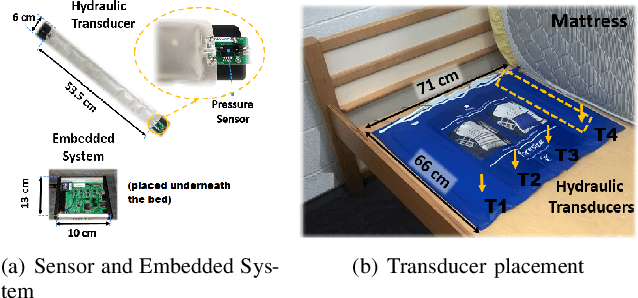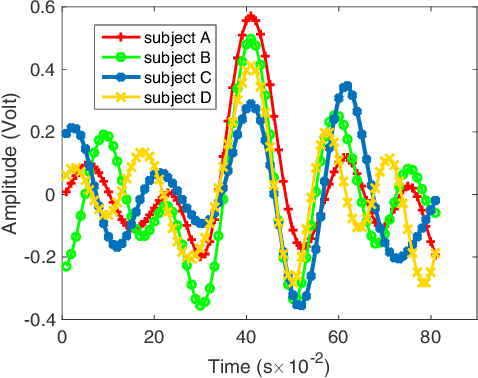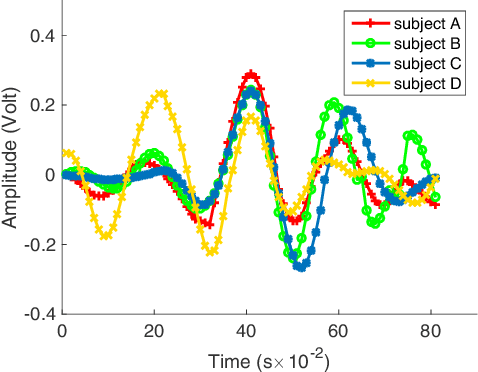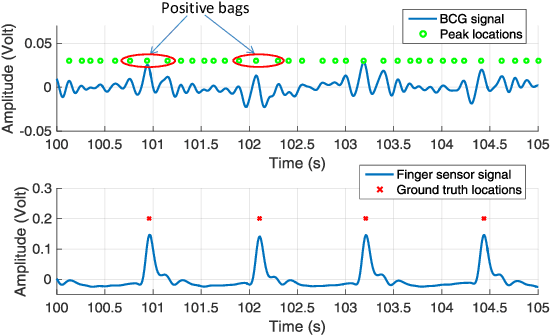Licet Rosales
Heart Beat Characterization from Ballistocardiogram Signals using Extended Functions of Multiple Instances
May 16, 2016



Abstract:A multiple instance learning (MIL) method, extended Function of Multiple Instances ($e$FUMI), is applied to ballistocardiogram (BCG) signals produced by a hydraulic bed sensor. The goal of this approach is to learn a personalized heartbeat "concept" for an individual. This heartbeat concept is a prototype (or "signature") that characterizes the heartbeat pattern for an individual in ballistocardiogram data. The $e$FUMI method models the problem of learning a heartbeat concept from a BCG signal as a MIL problem. This approach elegantly addresses the uncertainty inherent in a BCG signal e. g., misalignment between training data and ground truth, mis-collection of heartbeat by some transducers, etc. Given a BCG training signal coupled with a ground truth signal (e.g., a pulse finger sensor), training "bags" labeled with only binary labels denoting if a training bag contains a heartbeat signal or not can be generated. Then, using these bags, $e$FUMI learns a personalized concept of heartbeat for a subject as well as several non-heartbeat background concepts. After learning the heartbeat concept, heartbeat detection and heart rate estimation can be applied to test data. Experimental results show that the estimated heartbeat concept found by $e$FUMI is more representative and a more discriminative prototype of the heartbeat signals than those found by comparison MIL methods in the literature.
* IEEE EMBC 2016, pp. 1-5
 Add to Chrome
Add to Chrome Add to Firefox
Add to Firefox Add to Edge
Add to Edge